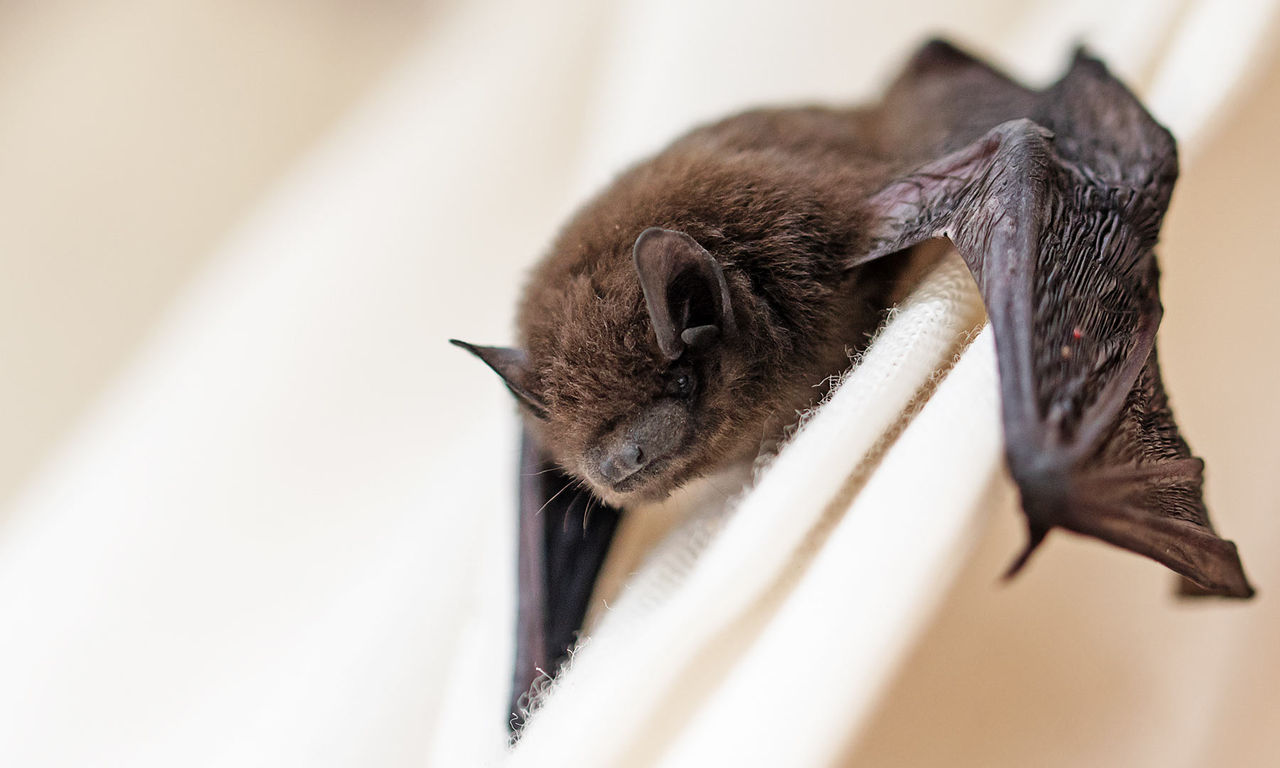May 14, 2018
April Overall
Roosting bats need all the help they can get during the warmer months
In early spring, female bats seek out suitable maternity roosts in which to raise their young who are typically born between June and July. These roosts are greatly important to the survival and recovery of bats.
The Key is Long Life
Some animals are able to keep their populations prospering by having a high birth rate. For example, mice have short lifespans – they usually only live one or two years – but give birth to dozens of young each year. Bats, on the other hand, are far more like humans than mice. Like us, the success of their populations rely less on high birth rates and more on a high survival rate. These winged small mammals generally have very few pups per year but are able to grow their populations by living long lives.
Of the 19 species of bats in Canada, 13 give birth to just one pup per year. The other six are luckier. The Big Brown Bat, Tri-coloured Bat and Silver-haired have been known to have two pups in a single year. And the Hoary bat often giving birth to twins! The Pallid Bat may have three. And the Eastern Red Bat can have a whopping five pups per year. However, they are the exception to the rule. And many of the bat species that give birth to just a single pup per year are at-risk, including the Little Brown Bat and the Northern Long- eared Bat which are both listed as Endangered.
The survival of these pups are critical to the survival of these species. That’s why these maternity roosting sites are so important. They hold precious cargo - the future generations of bat species.
Oh Baby
So what does all this roosting business entail? Bats tend to exhibit a high degree of site fidelity and will return to the same maternity roost each year. Gestation periods for Canadian bats vary. Some bat species, like the Long-eared Bat, give birth to their young in just 40 days, while other species, like the Townsend’s Big-eared Bat, have to wait 100 days before meeting their newborns between June and August. After a grueling birth, female bats give birth to helpless pups that weigh up to 25 per cent of the female’s body weight. Imagine that! Ouch!!
Bat pups begin to see and hear a few hours after they’re born, however, the pups are born without fur, as the fur only grows in four to 14 days after birth. By the end of August, the pups gain the courage to give flying a whirl. But that doesn’t mean they’re flying the coop! The pups will stick close to their moms until the end of summer so they can learn how to hunt for food and seek out spots to roost.
What Happens When You Evict a Bat
The issue that bats and humans face is that some bat species prefer human-made structures (from homes to barns) to roost in. This is partly due to a loss in their natural habitat. As we’ve cut down trees and taken over this habitat, they’ve been forced to adapt, and that means bunking with us in our homes (they often make a temporary home in attics and walls). While some bat species will have a few spots to roost, others, like the Big Brown Bat, like to find a roost and hunker down until their pups are ready to make it on their own.
If the idea of having a bat as a houseguest bothers you, I imagine you’d be more bothered knowing that if you choose to evict a bat during the summer, you could be doing irreparable damage to an entire bat population. You may be able to remove the female bat from your home, but you’ll leave the helpless pup (or pups) to die. And then you’ll have to deal with the carcass or carcasses in your home. Moreover, your actions could actually impact their population dynamics – where they spend their time, where they roost, and more. Instead, there are ways to lend a hand.
Three Things You Can Do to Help
- Put up a bat house in a nice sunny spot and out of a predator’s reach.
- Don’t cut down dead tree snags – many bat species use them as maternity roosts. Endangered Tri-coloured Bats, for example, have been known to return to the same tree site for 20 years.
- If you MUST exclude bats from your house – the best time to do this is September and October. Whatever you do, don’t send them packing between May and August or over winter.
